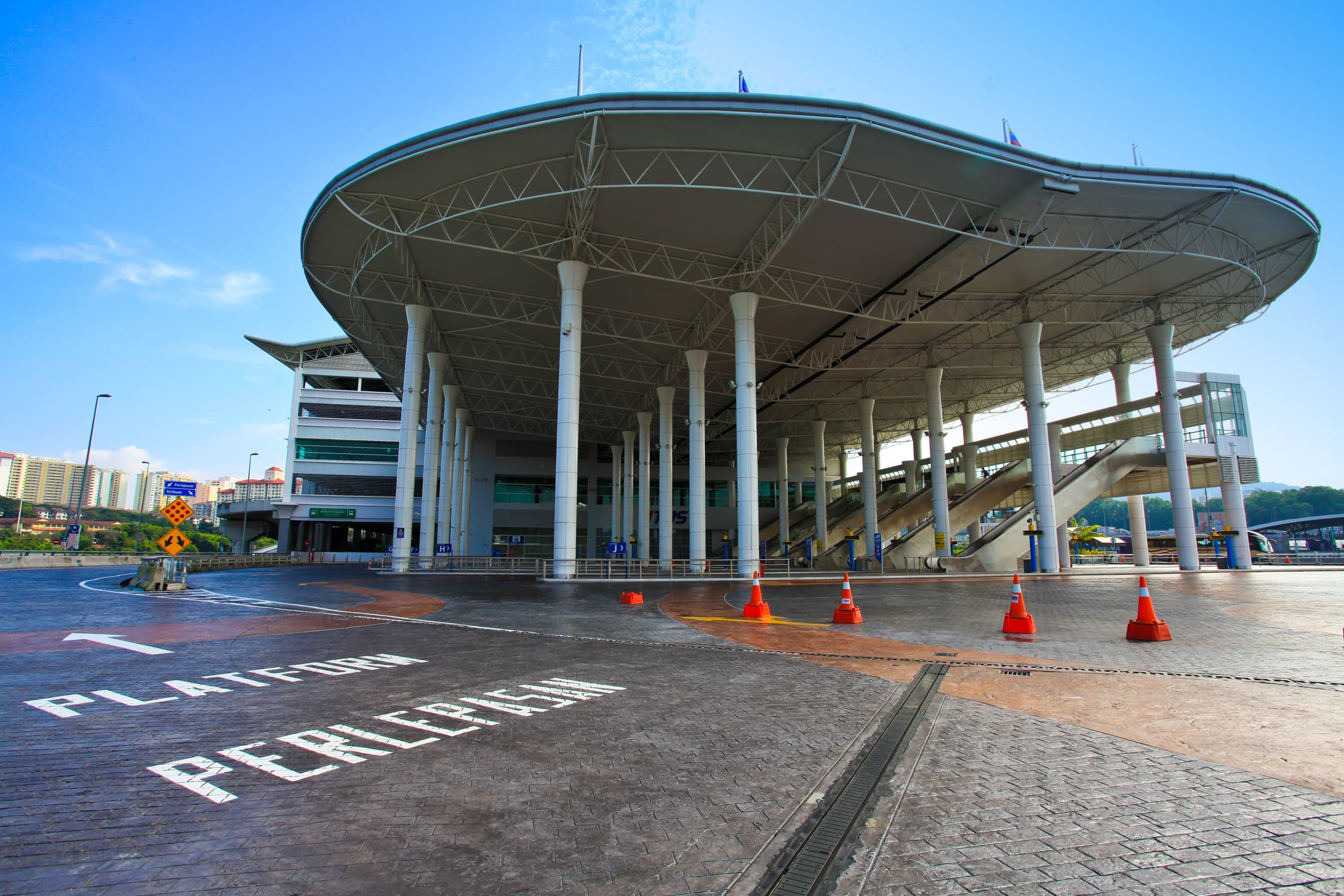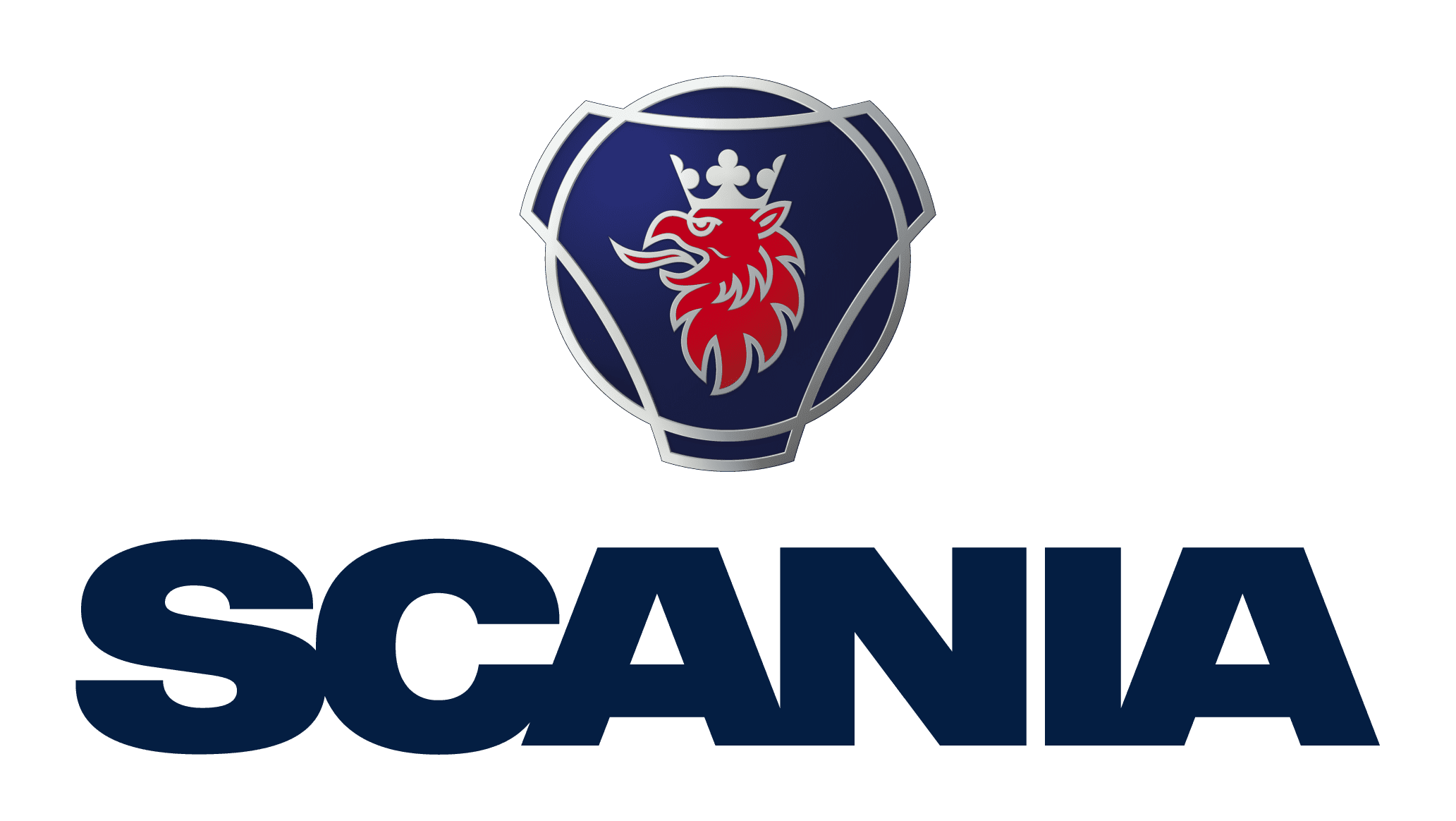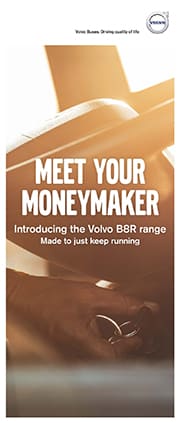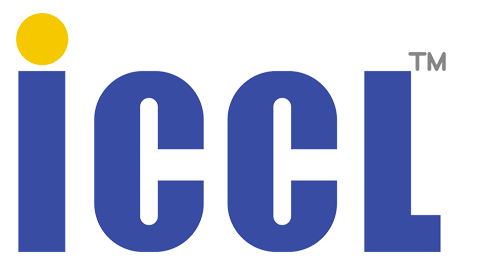Terminal Bersepadu Selatan (TBS)
 Malaysia's first integrated bus terminal links with other forms of transportation in order to provide fast and efficient connectivity for travellers. Fajar heads on down to find out what it takes to build a state of the art transportation hub.
Malaysia's first integrated bus terminal links with other forms of transportation in order to provide fast and efficient connectivity for travellers. Fajar heads on down to find out what it takes to build a state of the art transportation hub.
Terminal Bersepadu Selatan (TBS) has started its operation on 1st of January 2011 as an fully integrated hub that connects several modes of transportation. It is located just outside Kuala Lumpur, a short trip to the south. Here we are taking a closer look at the buses that arrive and depart from here. All bus companies that start their journeys from TBS will head to the southern sector. The idea behind TBS is to support Pudu Central Terminal and Jalan Duta Terminal. This is to avoid the congestion in the city and to make it easier for travellers to connect to other areas. The terminal hosts a total of 43 bus operators and sees some 500 buses daily. TBS manages between 10 000 to 12 000 passengers a day.
The design features the latest in transportation knowledge. The TBS was carefully designed by the government in collaboration with Maju Holding. The departure and arrival halls are located in separate areas of the terminal in order to manage the flow of passengers better as this will avoid the different groups of people to all converge in one spot. In addition, TBS features resting places such as surau, cafeteria and a lounge for the bus drivers.
Centralized Ticketing System
TBS uses a Centralized Ticketing System whereby the system allows to sell the tickets on behalf of all the bus operators housed there and in turn it supports the requirements of all bus operators. With this new system, there will be no competition inside the terminal while it also reduces the noise of people screaming to sell their tickets. After all, the trip to see your relatives, business partner or to go on a vacation should start in quiet and with ease of use. Another advantage of this system is the ease of use for passengers as there is only one centralised counter to buy a bus ticket, thus limiting confusion and possibilities for touting.
Milling around the terminal, we wanted to find out what passengers think about the newly built facility and received quiet a number of positive reviews. Here are some:
Hazwan, 21, Student
“The system here is very systematic and the terminal is much more modern than the old terminals in Kuala Lumpur. As a student, I often use the public transportation which is bus as I need to save on cost. Moreover not every stop has KTM facilities. Therefore TBS terminal is more convenient for a student like me.”
Syahirah, 21, Married
“I found the terminal has everything that a traveller needs. The thing that I like the most is the centralized ticket counter whereby I do not need to have to queue for very long as I can go to any counter to buy the bus ticket that I want. Public transportation is very important to the people that don’t own a car or any other personal transportation like me but like to go anywhere. Furthermore, the bus arrival is quite punctual and in this integrated terminal they managed to solve the issue of ticket touts.”
Alex Wong, 40, Singapore
“I am quite surprised to see the terminal for the first time. I can say it is much better than the Singapore terminal. Previously I used the Pudu Terminal which is not up to standard for me from the aspect of safety. But now I can see enforcement agencies inside the terminal, which makes me feel safer."
Safety and Security
TBS terminal has a total of 600 CCTV installed all over the terminal to ensure the safety of passengers. These monitor activity with the terminal for 24hours a day. Security guards are placed at several points of the terminal to ensure quick action in case needed as well as contact persons for those needing assistance. Within the premises one will also find the Terminal Management Centre where management engages with all of the parties inside the terminal. TBS also houses a number of enforcement agencies such as SPAD and PDRM which are positioned in a strategic area of the terminal in order to have high visibility for the public. Working hand in hand with with government agencies (JPJ, MIROS) for enforcement activity such as regularly conducting spot-checks at the bus holding area and free medical tests for the bus drivers can be done inside the terminal.
“At the end of the day, it is all about engaging with the drivers because we value these people as we leave the passengers in their capable hands. Therefore we have to ensure the buses are in a good working condition and the driver’s needs are fulfilled,” said Mohammed Roslan Dato’ Shariff, Managing Director of Maju TMAS Sdn Bhd.
In terms of building features, TBS has reached a certified 72% to facilitate a person with disability. On top of that, TBS has in place a sophisticated emergency response plan whereby all of TBS' staff are required to practice any possible scenario. This program stipulates that there are annual exercises. In case of a fire within the terminal, fire curtains will isolate the affected section. Naturally, emergency exists have been built into the superstructure to allow for swift evacuation in case of emergencies. Besides isolating affected burning areas, several parts of the terminal use fire curtains to prevent smoke emission. An aspect of the management's obligation is that everyone from the management team will be sent for training in the aspects of management, safety and communication. In case of emergencies, clear and precise communication is vital to avoid confusion and harm to people within the building.
“Our customer service centre will entertain any type of customer complaint. Other than that, we interact with our customers via social media medium such as Facebook, Twitter and our website. We do so, because we want to be attentive and proactive towards customers,” said Mohammed Roslan Dato’ Shariff.



























